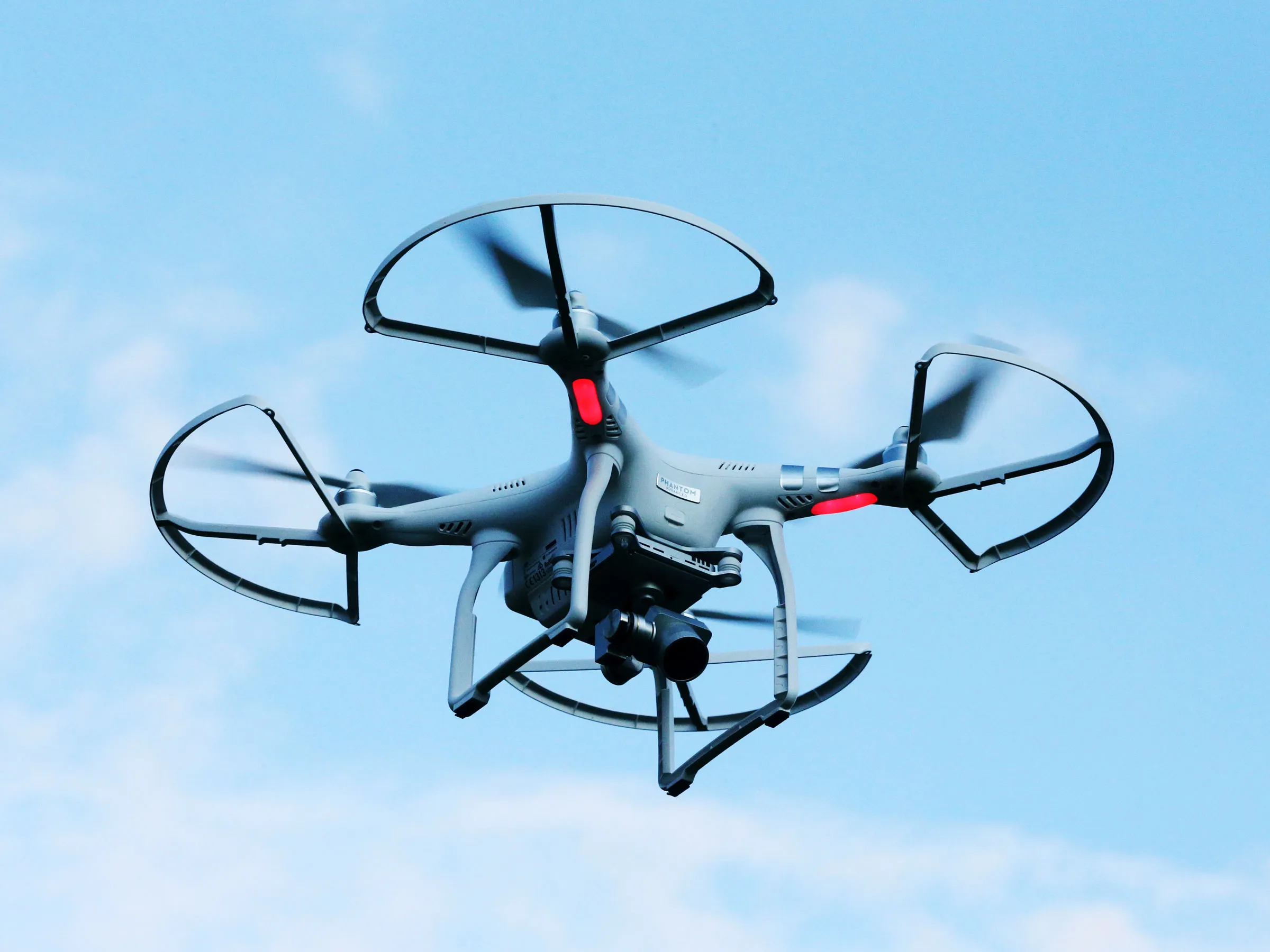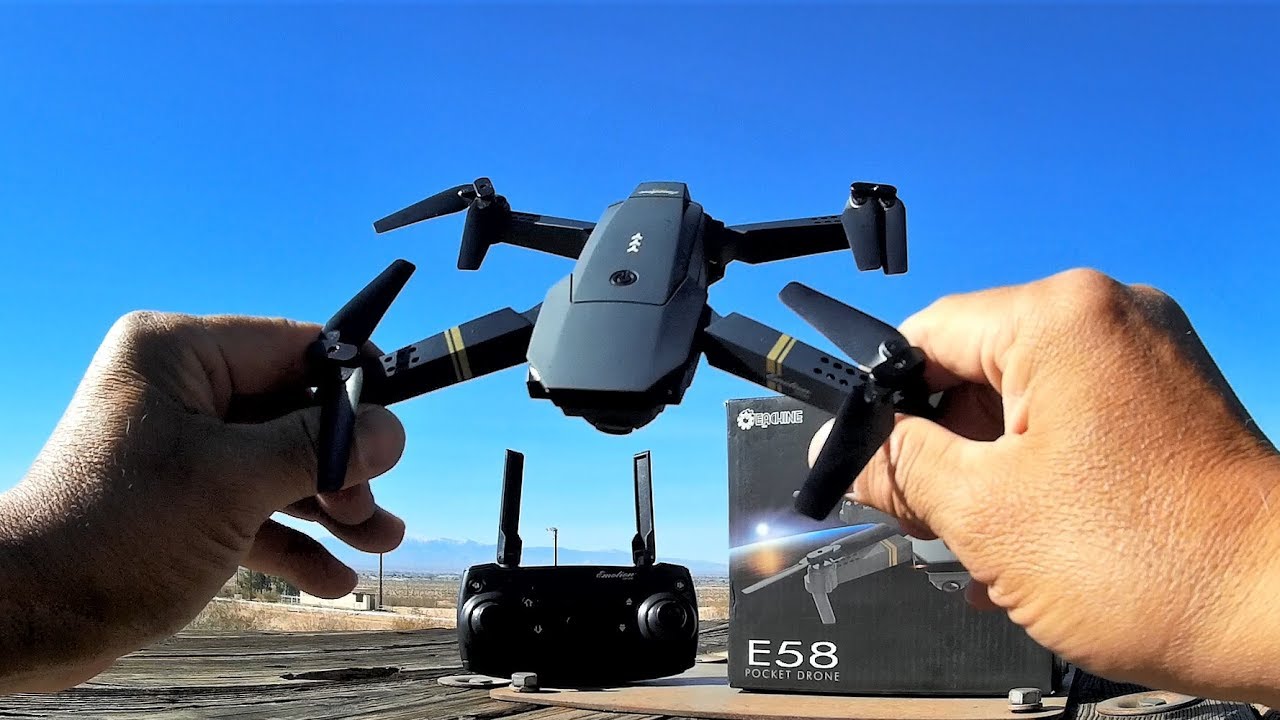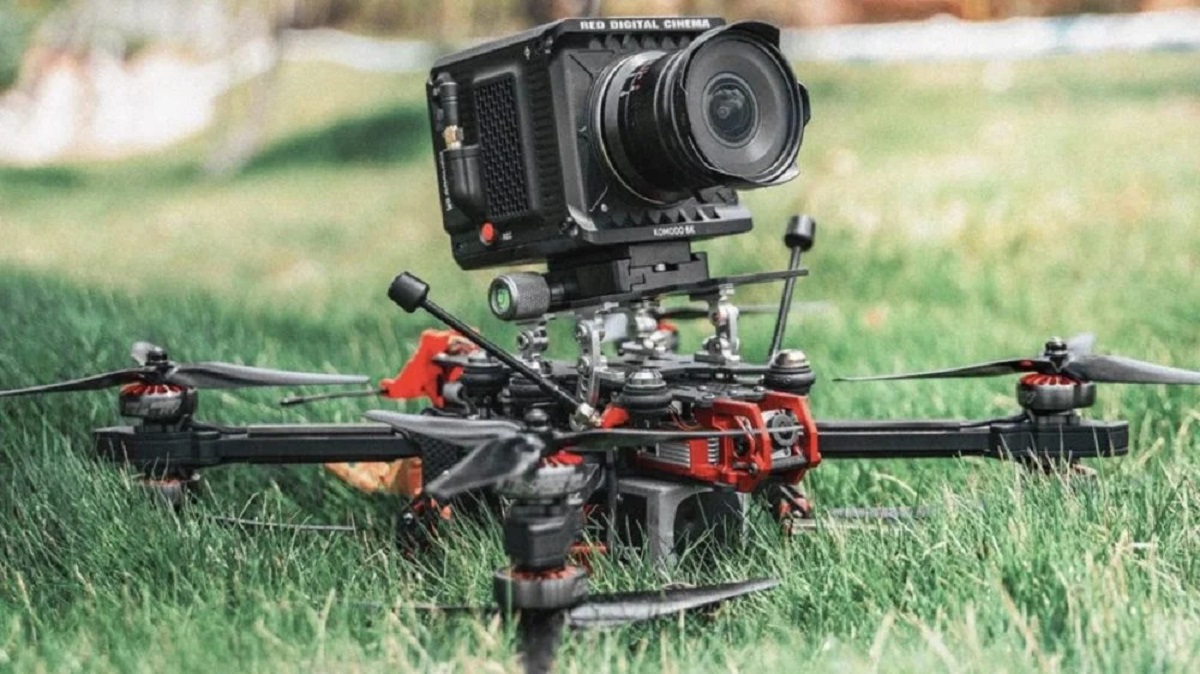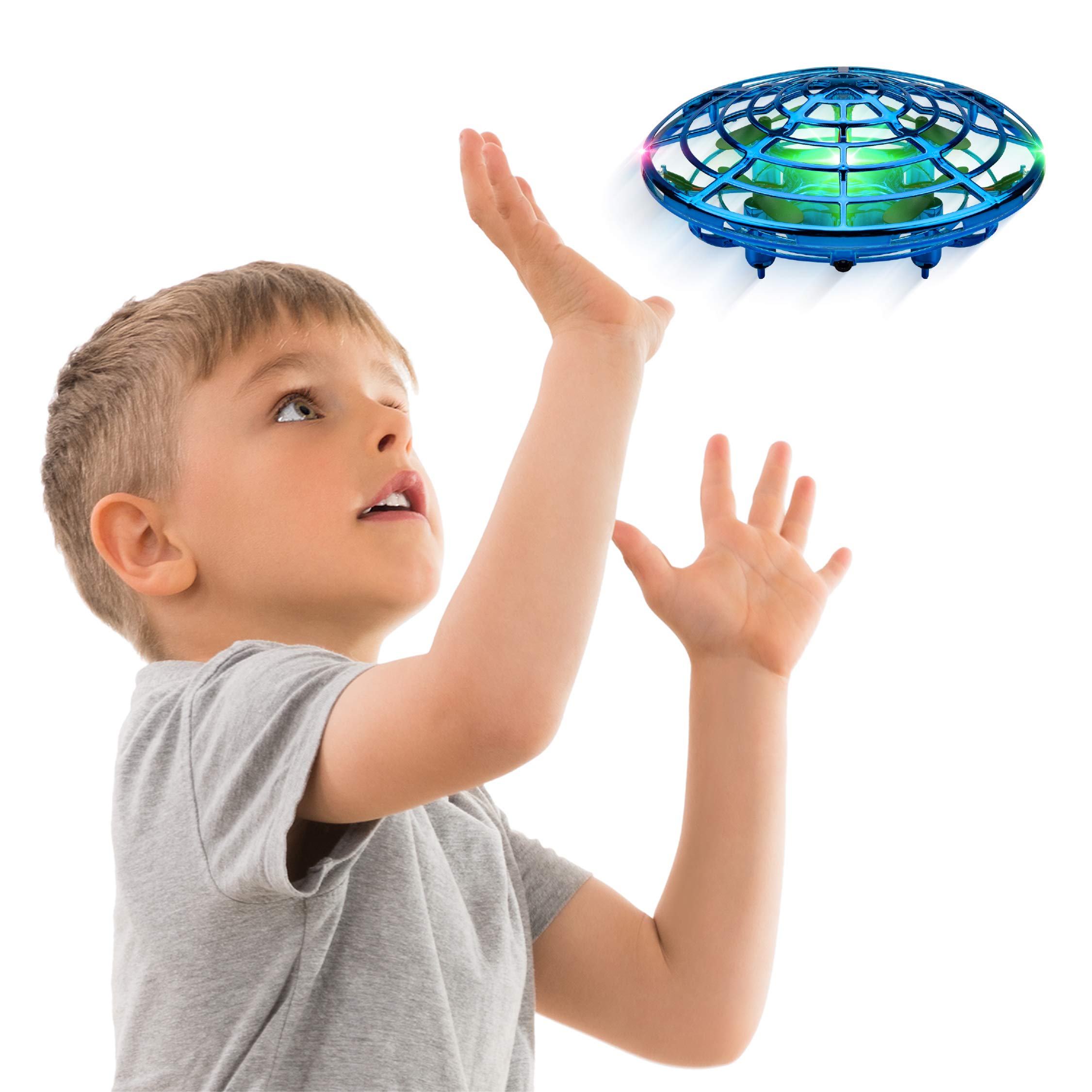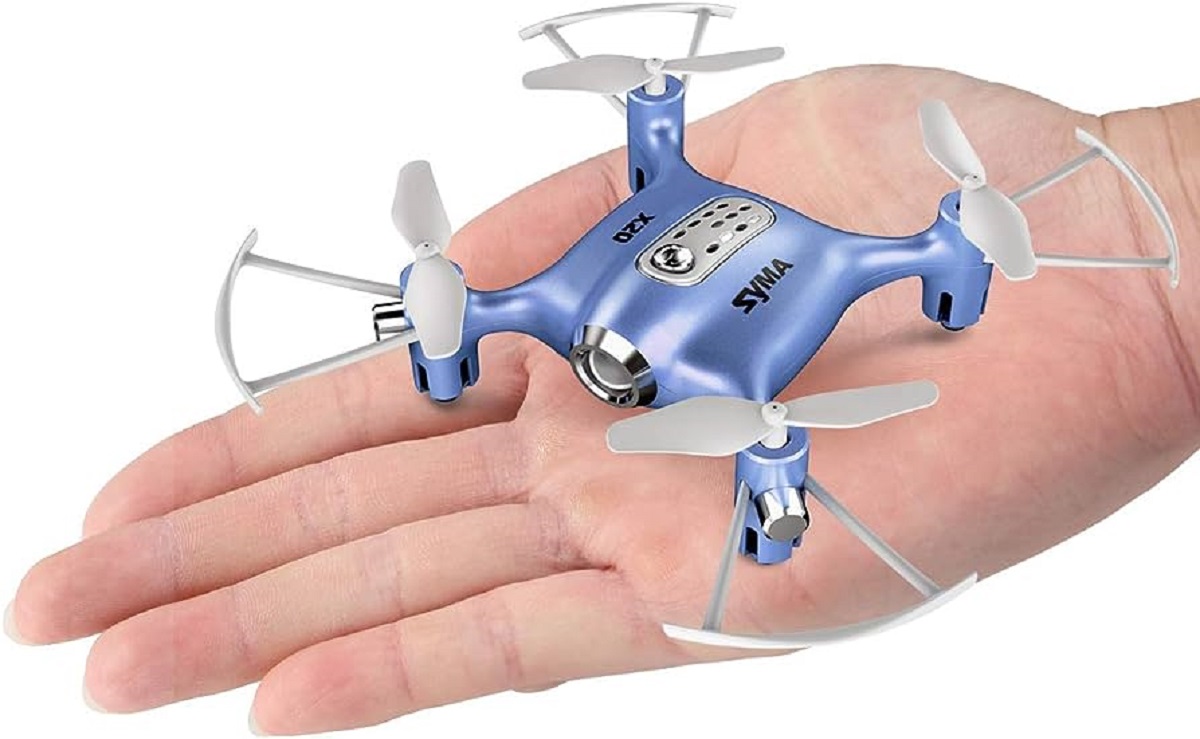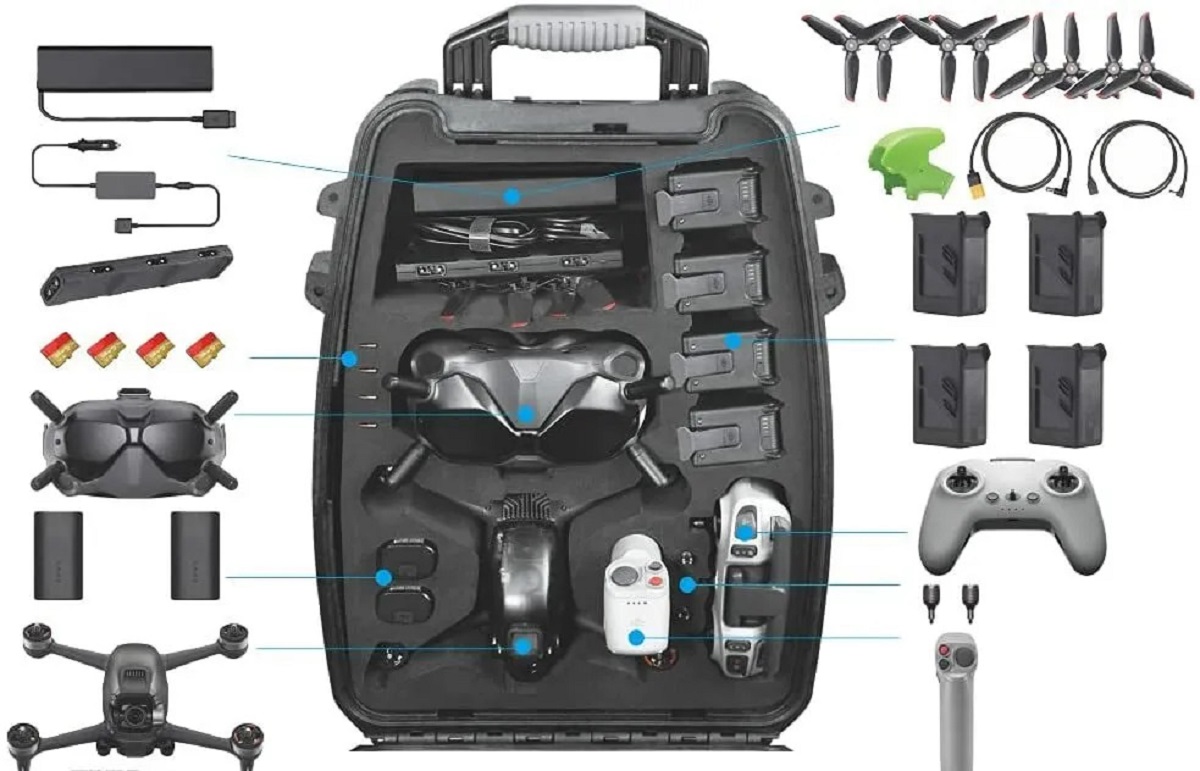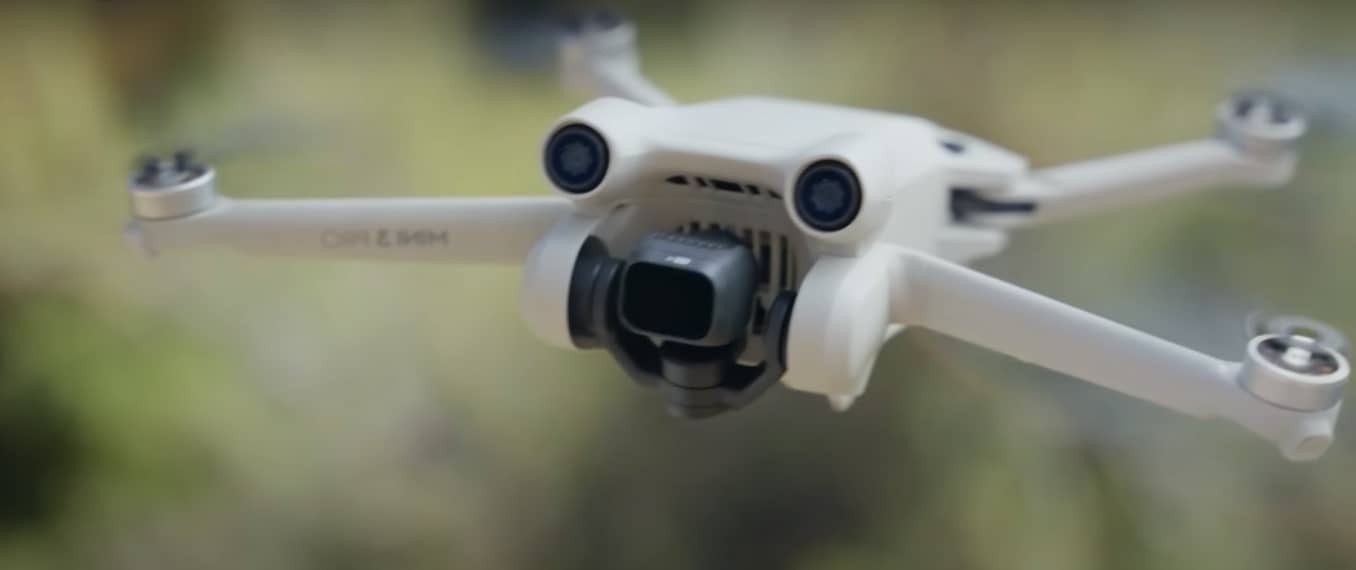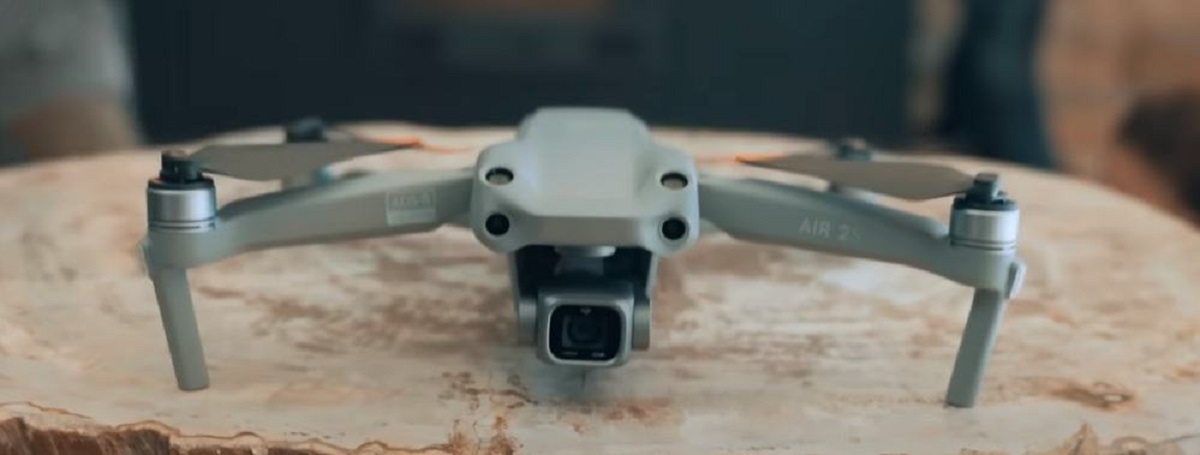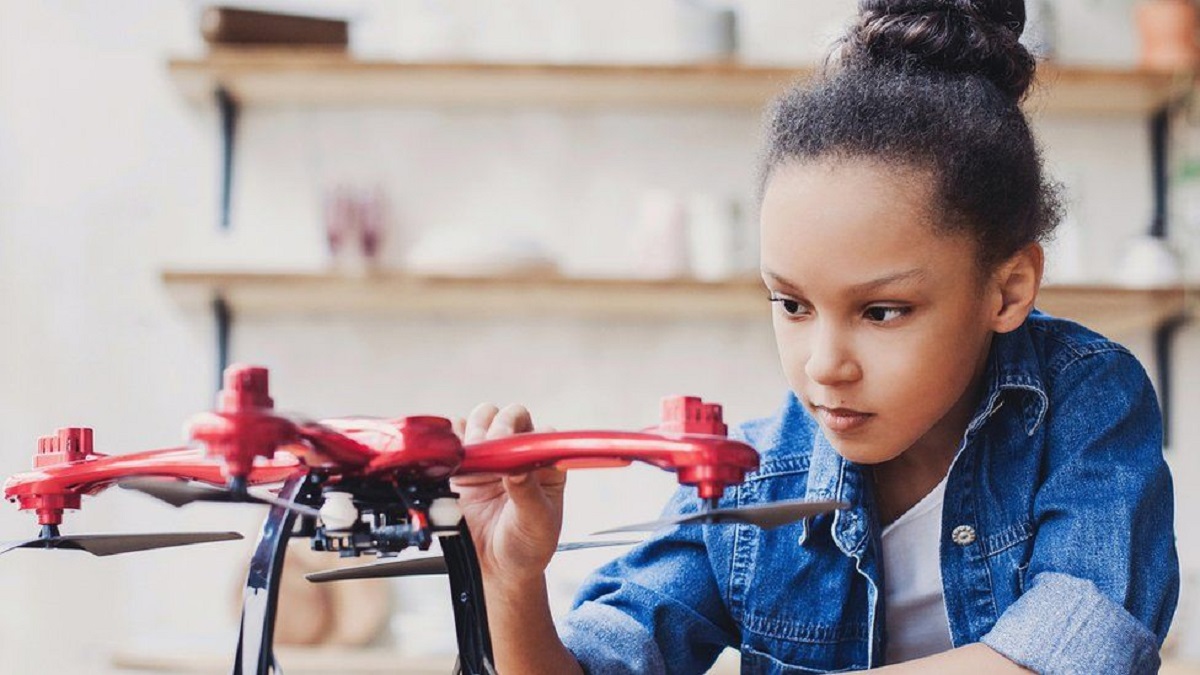Introduction
When you hear the word “drone,” what comes to mind? Perhaps you envision a small, remote-controlled aircraft capable of capturing breathtaking aerial photographs and videos. Or maybe you think of unmanned aircraft used for military surveillance and strikes. Drones have evolved from niche devices to mainstream gadgets, and their popularity continues to soar.
In recent years, drones have become more accessible and affordable, leading to their widespread use by hobbyists, professionals, and businesses across various industries. They offer a unique perspective, allowing us to explore the world from a bird’s-eye view. However, to truly appreciate the capabilities and functionality of drones, it is essential to understand what they look like and how they are designed.
In this article, we will delve into the fascinating world of drones, examining their common features, different types, components, camera systems, design, and flight mechanisms. Furthermore, we will touch on the regulations and guidelines that govern drone use to ensure responsible and safe operation.
So, let’s embark on this journey and discover what drones really look like, gaining a deeper understanding of these remarkable flying machines.
What is a Drone?
A drone, also known as an unmanned aerial vehicle (UAV), is an aircraft that operates without a human pilot on board. It is controlled remotely or autonomously through a combination of sensors, GPS navigation, and onboard computers. Drones can come in various shapes and sizes, ranging from small quadcopters to large fixed-wing aircraft.
One of the defining characteristics of drones is their ability to be operated remotely. Using a controller or a smartphone app, the user can control the drone’s movement, capture images and videos, and access real-time footage. This remote control aspect makes drones versatile and useful for a wide range of applications.
Drones are equipped with a variety of sensors and technologies that allow them to navigate and perform specific tasks. They can have GPS systems for precise positioning, gyroscopes and accelerometers for stability and control, and obstacle avoidance sensors to prevent collisions. Some advanced drones even have the ability to follow pre-programmed flight paths or autonomously perform complex maneuvers.
The primary purpose of drones varies depending on their design and intended use. Many hobbyist drones are used for aerial photography and videography, capturing stunning images and cinematic shots from unique perspectives. In the professional and commercial sectors, drones are used for surveying, mapping, inspections, search and rescue missions, delivery services, and even agricultural purposes like crop monitoring and spraying.
Military and government agencies have also been utilizing drones for surveillance, reconnaissance, and targeted strikes. However, in this article, we will focus on consumer and commercial drones, as they are more widely accessible and commonly used.
Now that we have a basic understanding of what drones are and their various applications, let’s delve deeper into the common features that distinguish them.
Common Features of Drones
While drones can vary significantly in terms of design and functionality, they share several common features that make them suitable for their intended purposes. Here are some of the most prevalent features found in drones:
- Rotors or Propellers: Most drones have multiple rotors or propellers attached to their body, typically in a quadcopter configuration. These rotors generate the necessary lift and thrust to keep the drone airborne and control its movement.
- Flight Controller: Drones are equipped with a flight controller, which is essentially the brain of the aircraft. The flight controller receives input from the user or autonomous systems and adjusts the speed of the rotors to maintain stability and control the drone’s movements.
- Battery: Drones are powered by rechargeable batteries that provide the necessary energy for flight. The battery capacity determines the drone’s flight time, so longer battery life is generally desirable for extended aerial operations.
- Remote Control: Drones come with a remote control or transmitter that allows the user to command the aircraft. The remote control often includes joysticks, buttons, and switches to control the drone’s movement, adjust camera settings, and activate features like return to home or automatic takeoff and landing.
- Camera or Payload Mount: Many drones have a built-in camera or a mount for attaching a camera or other payloads. Cameras vary in quality and capabilities, but they commonly offer high-resolution photo and video recording, live streaming, and even gimbal stabilization for smooth footage.
- GPS Navigation: GPS (Global Positioning System) is often integrated into drones to provide precise positioning and waypoint navigation. This allows the drone to perform autonomous flights, follow predefined routes, and return to a designated home point.
- Telemetry System: Drones may feature a telemetry system that provides real-time information about the drone’s status, including battery level, altitude, speed, distance from the controller, and signal strength. This data helps the user monitor the drone’s performance and make informed decisions during flights.
These are just a few of the common features found in drones. The specific features and capabilities of a drone can vary depending on its purpose and price range. Now that we have explored the common features, let’s delve into the different types of drones available.
Types of Drones
When it comes to drones, there is a wide range of types available, each designed for specific purposes and applications. Let’s take a look at some of the most common types of drones:
- Quadcopters: Quadcopters are the most popular type of drone and feature four rotors arranged in a square or X-shaped configuration. They are known for their stability, maneuverability, and ease of control, making them ideal for aerial photography, videography, and recreational flying.
- Fixed-wing Drones: Unlike quadcopters, fixed-wing drones have a winged design similar to traditional airplanes. They rely on forward motion generated by their propellers to produce lift, allowing them to cover greater distances and stay in the air for longer periods. Fixed-wing drones are commonly used for mapping, surveying, and agricultural purposes.
- Multicopters: Multicopters refer to drones with more than four rotors. They can have six, eight, or even more rotors, providing increased stability and payload capacity. These drones are often used for professional videography, heavy lifting, and industrial inspections that require a higher level of stability and control.
- Racing Drones: Racing drones are specifically designed for high-speed flight and competitive racing events. They are lightweight, agile, and capable of executing rapid maneuvers. Racing drones often feature FPV (First Person View) systems, allowing the pilot to see the drone’s perspective in real-time using goggles or a monitor.
- Toy Drones: Toy drones, also known as mini drones or nano drones, are small and affordable drones that are primarily used for recreational purposes. They are easy to fly, often operated indoors, and come with basic features like altitude hold and beginner-friendly flight modes.
- Professional Drones: Professional drones are designed for commercial applications such as aerial photography, mapping, inspections, and surveying. They offer advanced features, higher quality cameras, longer flight times, and more robust construction to withstand demanding environments.
- Underwater Drones: While most drones operate in the sky, there are also drones designed to explore underwater environments. These underwater drones are equipped with waterproof housings, special propulsion systems, and cameras or sonar systems for underwater exploration and photography.
These are just a few examples of the different types of drones available in the market. Each type has its unique characteristics, advantages, and limitations, catering to specific needs and preferences. Understanding the different types will help you choose the right drone for your intended purpose.
Understanding Drone Sizes
When it comes to drones, size plays a crucial role in determining their capabilities, flight characteristics, and intended use. Drones come in a range of sizes, from small and portable to large and heavy-duty. Understanding these different sizes can help you choose the right drone for your requirements. Let’s explore the various drone sizes:
- Micro Drones: Micro drones are the smallest category of drones available. They are usually palm-sized or smaller, making them highly portable and convenient for indoor use. Micro drones are perfect for beginners or those looking for a fun and inexpensive way to experience drone flying.
- Mini Drones: Mini drones are slightly larger than micro drones and often fit in the palm of your hand. They offer a balance between portability and functionality, typically featuring basic features like altitude hold, basic cameras, and short flight times. Mini drones are suitable for casual users who want a compact and affordable drone for recreational purposes.
- Mid-sized Drones: Mid-sized drones are larger and more capable than micro and mini drones. They offer better stability, longer flight times, and more advanced features. Mid-sized drones are popular among hobbyists and amateur photographers who want better image quality and more control over their aerial shots.
- Professional Drones: Professional drones are larger and more robust, designed for commercial applications and professional-grade photography and videography. These drones can carry heavier cameras and payloads, have longer flight times, and offer more advanced flight controls and shooting modes. Professional drones are commonly used by filmmakers, surveyors, and inspection professionals.
- Heavy-lift Drones: Heavy-lift drones are the largest category of drones, capable of carrying significant payloads. They are designed for specialized applications that require lifting heavy equipment, such as industrial inspections, search and rescue missions, and delivery services. These drones often have multiple rotors or larger fixed-wing designs to generate enough lift capacity.
It’s important to note that the size of a drone doesn’t solely determine its capabilities. Factors such as weight, motor power, and battery capacity also play a significant role. It’s always advisable to check the specifications and features of a drone before making a purchase.
Now that we have explored drone sizes, let’s dive into the various components that make up a drone’s structure.
Drone Components
A drone is a complex machine that consists of several key components working together to ensure stable flight, efficient control, and reliable performance. Understanding these components can provide insight into how drones operate and how they are built. Let’s take a closer look at the key components of a drone:
- Frame: The frame is the main structure of a drone that holds all the components together. It is typically made of lightweight materials such as carbon fiber or aluminum to ensure strength and durability while minimizing the weight of the drone.
- Propellers: Propellers are responsible for creating thrust and lifting the drone off the ground. Most drones have multiple propellers (usually two or more pairs), and they come in various sizes and designs. The rotation speed and direction of the propellers are controlled by the flight controller to maneuver the drone.
- Motors: Motors are responsible for spinning the propellers and generating the necessary thrust for flight. They are typically brushless motors that provide high efficiency and reliability. The number and power rating of the motors will depend on the size and weight of the drone.
- Electronic Speed Controllers (ESCs): ESCs are electronic devices that control the speed of the motors. They receive signals from the flight controller and adjust the power supplied to each motor accordingly, allowing for precise control of the drone’s movements.
- Flight Controller: The flight controller is the brain of the drone. It includes a microprocessor and various sensors, such as gyroscopes and accelerometers, to stabilize the drone, maintain its orientation, and process user inputs. The flight controller calculates the appropriate motor speeds and sends commands to the ESCs for smooth flight.
- Battery: Drones are powered by rechargeable lithium-polymer (LiPo) batteries. The battery provides the necessary electrical energy for the motors, flight controller, and other onboard systems. The capacity and voltage of the battery play a crucial role in determining the flight time and performance of the drone.
- Remote Controller: The remote controller, or transmitter, is used to control the drone’s movements. It communicates with the drone via radio signals, allowing the pilot to command the drone’s flight, change settings, and access various functions like camera controls and flight modes.
- Camera: Many drones are equipped with built-in cameras or have a camera mount for attaching compatible cameras. These cameras can be used for aerial photography, videography, or live streaming. Higher-end drones may have advanced camera systems with gimbal stabilization for smoother footage.
- Sensors: Drones may incorporate various sensors, such as GPS, altimeters, compasses, and obstacle detection sensors, to provide the drone with information about its position, altitude, speed, and surroundings. These sensors enhance flight stability, enable autonomous flight modes, and aid in obstacle avoidance.
These are the primary components that make up a drone. Each component plays a crucial role in the drone’s overall performance, capabilities, and flight characteristics. Now that we have explored the main components, let’s move on to understanding the camera systems found in drones.
Camera Systems in Drones
The integration of camera systems in drones has revolutionized aerial photography and videography, allowing us to capture stunning images and cinematic footage from unique perspectives. The quality and capabilities of the camera systems found in drones can vary significantly, depending on the drone’s purpose and price range. Let’s explore the different aspects of camera systems in drones:
Resolution: The resolution of a camera refers to the number of pixels it can capture, which determines the level of detail in the image or video. Most consumer drones feature cameras with resolutions ranging from 12 to 20 megapixels, while professional-grade drones may offer even higher resolutions for more intricate shots.
Video Recording: Camera systems in drones are capable of recording videos in various formats and resolutions. Common video resolutions include HD (720p), Full HD (1080p), and Ultra HD or 4K (2160p). Higher-end drones may even support cinematic video modes, like 8K or HDR (High Dynamic Range) video, for exceptional image quality.
Stabilization: Stability is crucial when capturing aerial footage, as drones are susceptible to wind and vibrations. Higher-end drones often come equipped with camera stabilization systems, such as three-axis gimbals. Gimbals minimize the effects of drone movements, resulting in smoother and more professional-looking footage.
Field of View (FOV): The field of view determines the width of the area captured by the camera. This is typically expressed as an angle, with wider angles capturing more of the surroundings. Drones may have fixed FOV cameras or adjustable FOV options, allowing users to customize their shots to achieve a desired perspective.
Camera Controls: Many drones provide the ability to control various camera settings, such as exposure, white balance, ISO, and shutter speed. Some advanced drones even allow users to shoot in RAW format, offering greater flexibility for post-processing and editing.
Live Streaming: Some camera systems in drones feature live streaming capabilities, allowing users to view the drone’s perspective in real-time. This is especially useful for FPV (First Person View) flying, where the drone’s footage is transmitted to a receiver or smartphone, providing an immersive piloting experience.
Additional Features: Depending on the drone and camera system, there may be additional features available, such as object tracking, intelligent flight modes, and automated camera movements. These features enhance the shooting experience and enable more creative and dynamic shots.
It is important to consider the camera system’s quality and capabilities when choosing a drone, especially if aerial photography or videography is a key requirement. Higher-end drones typically offer superior camera systems with advanced features, better image stabilization, and greater control over camera settings.
Now that we have explored the camera systems, let’s move on to the design and structure of drones.
Drone Design and Structure
The design and structure of a drone play a significant role in its performance, stability, and functionality. Drones come in various shapes and configurations, each with its own advantages and purpose. Understanding the design and structure of drones can give us insight into their flight characteristics and capabilities. Let’s explore the different elements of drone design:
Frame: The frame is the backbone of a drone, providing structural integrity and support for all the components. It is typically constructed using lightweight materials like carbon fiber or aluminum to ensure strength while minimizing weight. The frame design can vary, with most drones featuring a multi-armed configuration to distribute the weight and provide stability.
Arms: Drones with multiple rotors, such as quadcopters and hexacopters, have arms that extend from the center of the frame. The arms hold the motors and propellers, providing lift and stability during flight. These arms are typically designed to be foldable or detachable, allowing for easier transportation and storage.
Landing Gear: Landing gear is an essential feature of most drones, providing support and stability during takeoff and landing. The landing gear can vary in design, ranging from simple skids or struts to retractable landing gear in more advanced drones. Some drones even incorporate shock-absorbing systems to minimize the impact of landing.
Propellers: The propellers of a drone are responsible for generating lift and thrust. They are attached to the motors and spin rapidly to create the necessary airflow. The size, pitch, and number of propellers can vary depending on the drone’s design and intended use. Most drones have clockwise and counterclockwise rotating propellers to maintain balance and stability.
Gimbal: A gimbal is a mechanical device that stabilizes and holds the camera in place on the drone. It allows the camera to rotate smoothly and independently of the drone’s movements, resulting in stable and leveled footage. Gimbals can be two-axis or three-axis, with the latter providing better stabilization by compensating for roll, pitch, and yaw movements.
GPS Module: Many drones incorporate a GPS (Global Positioning System) module in their design. The GPS module enables precise positioning, altitude hold, and accurate navigation. It enhances flight stability, enables autonomous flight modes like follow-me or waypoint navigation, and facilitates return-to-home functions.
LED Lights: LED lights are often integrated into drones for visibility and orientation. They help the pilot identify the drone’s direction, especially during low-light conditions. Some drones also utilize LED lights for aesthetic purposes, creating vibrant and visually appealing light displays.
Control Surfaces: In fixed-wing drones, control surfaces such as ailerons, elevators, and rudders are used to control the aircraft’s movements. These surfaces can be manipulated by servos or other mechanical mechanisms to adjust the drone’s pitch, roll, and yaw.
The design and structure of a drone are crucial factors in its flight performance, stability, and functionality. Manufacturers continually innovate to optimize drone design for improved aerodynamics, efficiency, and versatility. By understanding the various elements of drone design, you can make informed decisions when choosing a drone that suits your specific needs and preferences.
Now that we have explored the design and structure of drones, let’s move on to understanding how drones achieve flight.
How Drones Fly
Understanding how drones achieve flight is essential to comprehend their maneuverability and control. Drones rely on a combination of aerodynamic principles, motor power, and sophisticated flight control systems to fly. Let’s explore the process of how drones achieve flight:
Lift: Like any aircraft, drones generate lift to overcome gravity and stay airborne. Lift is primarily generated by the rotation of the propellers, which creates a downward airflow and pushes the air below the drone. The shape and angle of the propeller blades, as well as the speed at which they rotate, determine the lift force produced.
Thrust: Thrust is the forward or upward force that propels the drone through the air. It is generated by the propellers’ rotation, pushing air backward as the drone moves forward. By adjusting the speed and direction of the propellers, the drone can maneuver and change its position in the air.
Control Surfaces: Drones, especially fixed-wing models, use control surfaces such as ailerons, elevators, and rudders to control their movements. These surfaces adjust and manipulate the airflow around the drone to change its pitch, roll, and yaw. By altering the angles of these control surfaces, pilots can change the drone’s orientation and direction of flight.
Flight Control Systems: Drones are equipped with onboard flight control systems that interpret user inputs and maintain stability during flight. These systems rely on data from various sensors, including accelerometers, gyroscopes, and altimeters, to monitor the drone’s position, altitude, and orientation. The flight control systems make rapid adjustments to the speed of the motors, ensuring the drone remains stable and responsive to pilot commands.
Battery Power: Drones are powered by rechargeable batteries, typically lithium-polymer (LiPo) batteries. The battery provides the necessary electrical energy to run the motors, flight control systems, and other onboard components. Battery capacity affects the flight duration, so it is important for pilots to monitor the battery level and plan flights accordingly.
Autonomous Flight: Many drones are equipped with advanced features that enable autonomous flight. Using GPS technology, drones can follow pre-programmed flight routes, maintain specific altitudes, and even return to a designated home point automatically. This autonomous capability allows drones to perform tasks such as surveying large areas or capturing complex aerial shots with ease.
Through the coordinated efforts of lift, thrust, control surfaces, flight control systems, and battery power, drones achieve flight and can be controlled with precision. The advancements in drone technology have made it possible for users to fly and capture stunning footage from unique aerial perspectives.
Now that we understand how drones fly, let’s explore the regulations and guidelines that govern their use to ensure safe and responsible operation.
Regulations and Guidelines for Drone Use
As drones have become more prevalent, regulations and guidelines have been put in place to ensure safe and responsible operation. It is essential for drone operators to familiarize themselves with these regulations to protect the safety of people, property, and airspace. Here are some key regulations and guidelines for drone use:
Registration: In many countries, drones above a certain weight must be registered with the appropriate aviation authority before they can be legally operated. Registration helps to ensure accountability and provides a way to trace the owner of a drone in case of any incidents or violations.
Fly Zones and Restricted Areas: Certain areas, such as airports, government facilities, and crowded events, are designated as no-fly zones or restricted areas. It is vital to identify these areas and adhere to the regulations imposed to avoid compromising security or endangering people’s lives.
Flight Altitude Limits: Aviation authorities typically impose altitude limits for drone flights. These limits vary across countries, but they are generally set below the minimum altitude for manned aircraft. Following altitude restrictions ensures the safety of manned flight operations and reduces the risk of collision.
Line of Sight: In many regions, drone operators are required to maintain visual line of sight with their drones during flight. This means that the operator must be able to see the drone with their own eyes and not rely solely on the drone’s camera feed. Maintaining visual contact allows for better control and awareness of the drone’s surroundings.
Privacy and Data Protection: When operating a drone, it is important to respect privacy laws and regulations. Avoid flying over private property without permission, and be mindful of capturing images or videos of individuals without their consent. Also, take measures to protect any data collected during the flight to ensure that it is not compromised or misused.
Drone Insurance: While not always mandatory, considering drone insurance is highly recommended. Drone insurance provides coverage for property damage, personal injury, and liability in case of accidents or incidents involving the drone. Having insurance safeguards against potential financial repercussions and provides peace of mind.
Local Regulations: It is crucial to keep updated with local regulations and guidelines regarding drone use. These regulations may differ from one jurisdiction to another, so it is necessary to consult the relevant aviation authority or conduct thorough research to ensure compliance with the specific rules in your area.
By adhering to these regulations and guidelines, drone operators can enjoy the benefits of drone flight while ensuring the safety and well-being of everyone involved. Responsible drone operation contributes to the positive perception and acceptance of drones in society and assists in the continued growth and development of the industry.
Now that we have covered regulations and guidelines, let’s conclude our exploration of drones.
Conclusion
Drones have emerged as versatile and powerful aerial gadgets, offering us a new perspective on the world we live in. From capturing stunning aerial photographs and videos to performing complex tasks in various industries, drones have revolutionized the way we view and interact with our surroundings.
In this article, we delved into what drones look like and how they are designed. We explored their common features, different types, components, camera systems, design, and flight mechanisms. We also discussed the regulations and guidelines that govern drone use to ensure responsible and safe operation.
Understanding the various components and features of drones allows us to make informed choices when selecting a drone that aligns with our intended use. Whether it’s for recreational purposes, aerial photography and videography, or professional applications, there is a drone available to suit every need and budget.
As technology continues to advance, we can expect even more innovative features and capabilities from drones in the future. However, it is crucial to remember that along with their many benefits, drones also come with responsibilities. Adhering to regulations, respecting privacy, and promoting safety should be at the forefront of every drone operator’s mind.
By embracing the potential of drones while maintaining a responsible and considerate approach to their use, we can continue to explore the skies and unlock the endless possibilities that these remarkable flying machines provide.







